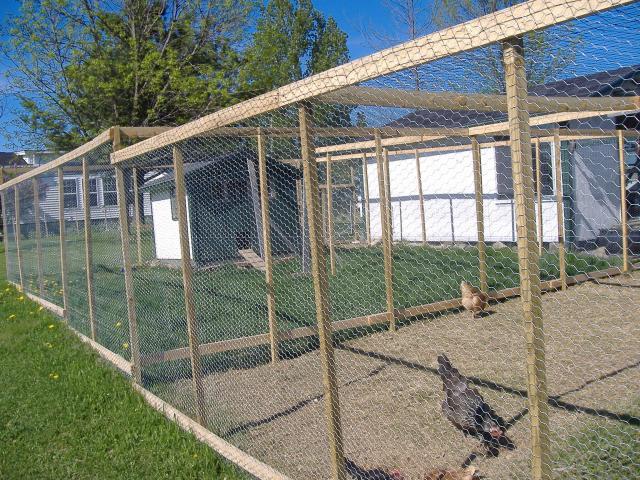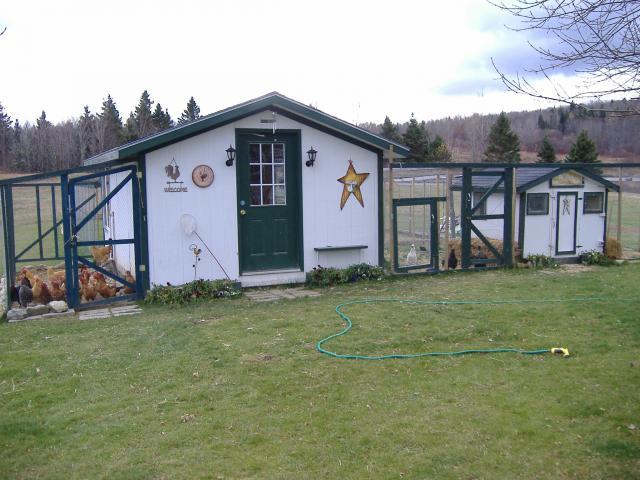Quote:
It is pretty easy to add a lean-to addition to the coop, WITH THE WALL STAYING THERE.
If however you want the wall "gone" so it is all free space, that is a much bigger and more complex undertaking and frankly you would be SERIOUSLY best off rethinking your plans to avoid it.
If all you want to do is the first option though (wall stays there, add a lean-to second "room" or "porch") it is not so hard. First you have to decide whether you want to, or even structurally CAN, attach the addition's roof to the existing wall or whether you will want/need to build it as a separate-but-touching structure. Attaching it to the existing wall is easiest and in most ways best, BUT you need to know whether the wall is strongly built enough (and in good enough shape) to handle the extra load.
For a *short* addition like you are planning, the existing wall most likely *can* support a bit of extra load, as long as it is not woefully underbuilt or in questionable condition. In this case, you would bolt a ledger board to the outside top of the wall and either perch the addition's rafters on top of it or use joist hangers attached to the ledger to support the rafters. If you use joist hangers you will need to cut a tiny birdsmouth in the bottom of each rafter so it seats flat in the joist hanger, but that is real easy (hold rafter up in appropriate position, mark angle and depth of cut, make cut, put up rafter).
The opposite end of the rafters will be supported by either the top of a stud wall if this will be a wholly-indoor space, or if it will be partly outdoor it is probably better to sink posts in the ground and do it pole-building style and run a beam across their top at the appropriate height to support the rafters. (Don't concrete the posts in, just sink them FAR below your local frostline and tamp the dirt in VERY VERY HARD, EVERY 4" OF FILL (i.e. more or less constantly as you refill the hole around the posts). If you do it on a stud wall, it needs to be up on something so it doesn't rot, just like for your regular coop; and it needs to be SERIOUSLY stable as you do not want it heaving/settling unevenly and wrenching your addition awry from the older portion!)
Once rafters are up, apply roof sheathing (preferably plywood), or apply crosswise nailers (purlins, whatver you want to call them) to your rafters and apply corrugated metal or plastic roofing.
If any of the above is a bit unclear just find a book on building sheds or pole barns, for diagrams and photos of it. It's really pretty simple though, you just have to watch that you have the dimensions/spacing of lumber and fasteners appropriately selected for the loads the thing will experience. (Its own weight, wind load, snow load).
It is generally easier NOT to try to make the addition's roof blend seamlessly into the old one, but do it as your diagram illustrates, set a bit lower as a separate roof. If you do that though you want to make Real Sure there is a) decent overhang and b) real good flashing to prevent runoff from the top roof from getting into the wall. Ideally you would actually run the flashing up under the edge of the upper roofing, around the fascia/soffit, down that short exposed part of wall, and then atop your addition's roofing. Realistically this may not be so feasible for a retrofit like this, but the main thing is to have the exposed part of wall protected and have the flashing end *on top of* the addition's roofing.
The wall will need to remain in place between old and new parts, and NO you cannot just go removing studs willy-nilly
as that would compromise its ability to bear the now-greater weight (old *plus new* roof). You can cut a doorway in there as long as you do it properly, doubling studs and using appropriate header. You can even remove all the sheathing so you just have exposed studs, if you want the chickens to be able to walk freely. (It will be a real nuisance for YOU to get thru there to clean etc, though!)
Good luck, have fun,
Pat






